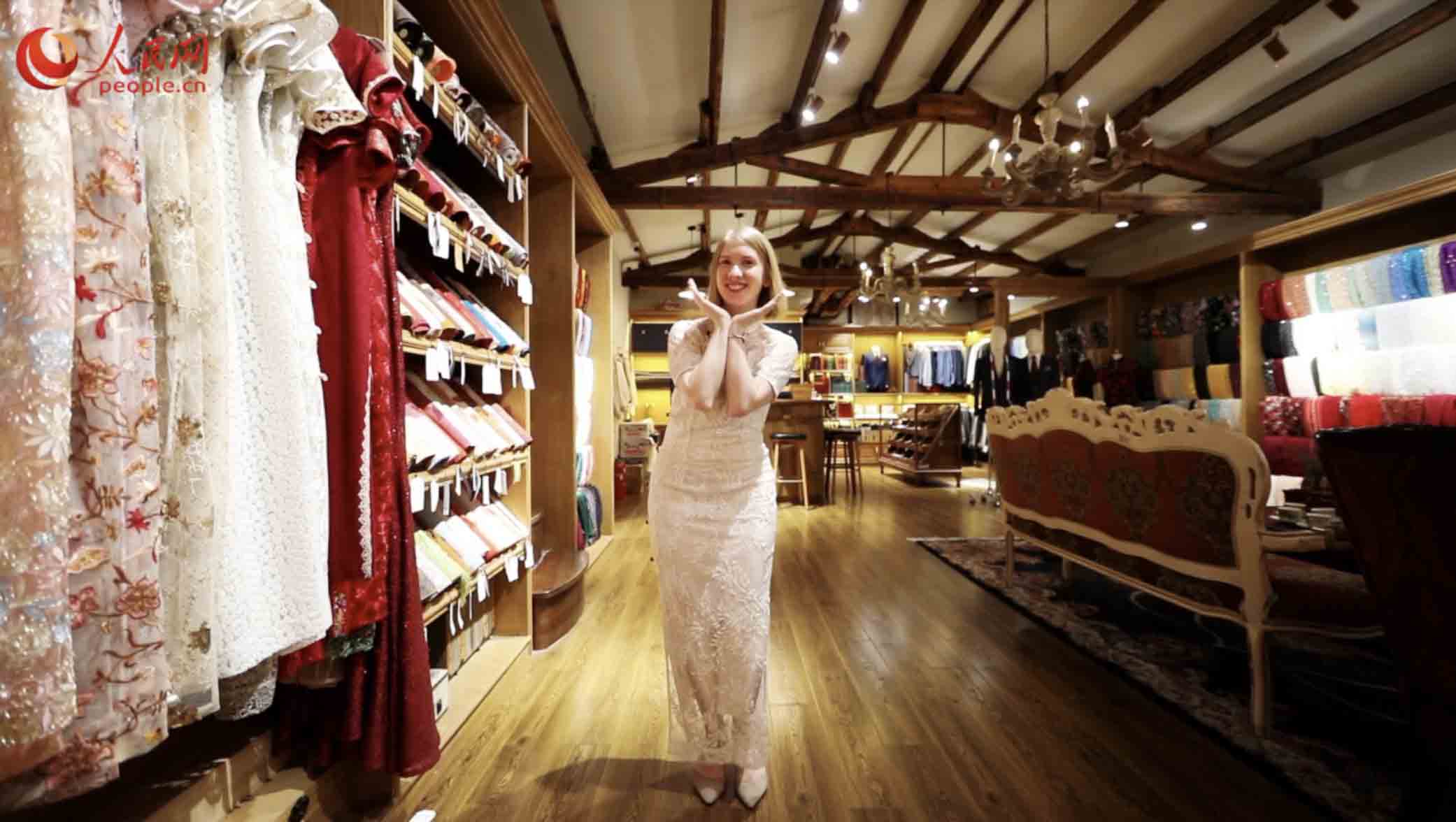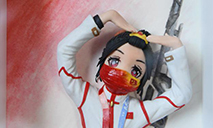Trying on traditional qipao, a Chinese symbol of elegance and grace
Originated from gowns worn by women during China’s Qing Dynasty (1644-1911), the qipao is an exquisite Chinese traditional dress for women.
With Shanghai designers injecting Western-style elements in the 1920s, the qipao underwent a period of modernization during this time. It became a favorite among Shanghai’s upper classes and celebrities, and even something of a status symbol, as each piece had to be custom-made.
Qipao enjoyed popularity in the 1930s among women from all walks of life, becoming one of the official national dresses. In addition to its use of traditional silks, various fabrics - cotton, wool, linen, and satin brocade - rendered a new look for the modern qipao. Stunning embroidery further made the qipao an artistic embodiment of beauty.
Primarily featuring a standup collar, knotted buttons, hemmed slits on two sides, and a tailored fit, the qipao has long been known as a Chinese icon of elegance and grace.
Opposed to the traditional qipao with its flat appearance, the Shanghai-style qipao is designed to follow a woman’s curves, especially the shoulders, chest, and waist, which highlights feminine charms. It can also be shorter than the traditional one, reaching to above the knee, with side slits that reach up to the thigh.
A tailored qipao must go through dozens of painstaking processes, from measuring to forming, taking anywhere between 45-60 days to complete.
Nowadays, the qipao can be seen on official occasions, and at parties, weddings, beauty pageants, as well as in daily life. It represents a sense of self-identity and is a cultural and lifestyle symbol.
Join Anne in this episode of #didyouknow, trying on various qipao to find out the unique charm of this figure-flattering Chinese icon!

Photos
 Dance show saluting traditional culture of the Song Dynasty makes its debut
Dance show saluting traditional culture of the Song Dynasty makes its debut Village in SW China’s Yunnan embraces prosperity through agricultural tourism
Village in SW China’s Yunnan embraces prosperity through agricultural tourism Eighth birthday for pair of giant pandas celebrated in Haikou, Hainan province
Eighth birthday for pair of giant pandas celebrated in Haikou, Hainan province Olympic gold medalists portrayed in Shanxi artist’s polymer clay sculptures
Olympic gold medalists portrayed in Shanxi artist’s polymer clay sculptures
Related Stories
Copyright © 2021 People's Daily Online. All Rights Reserved.






